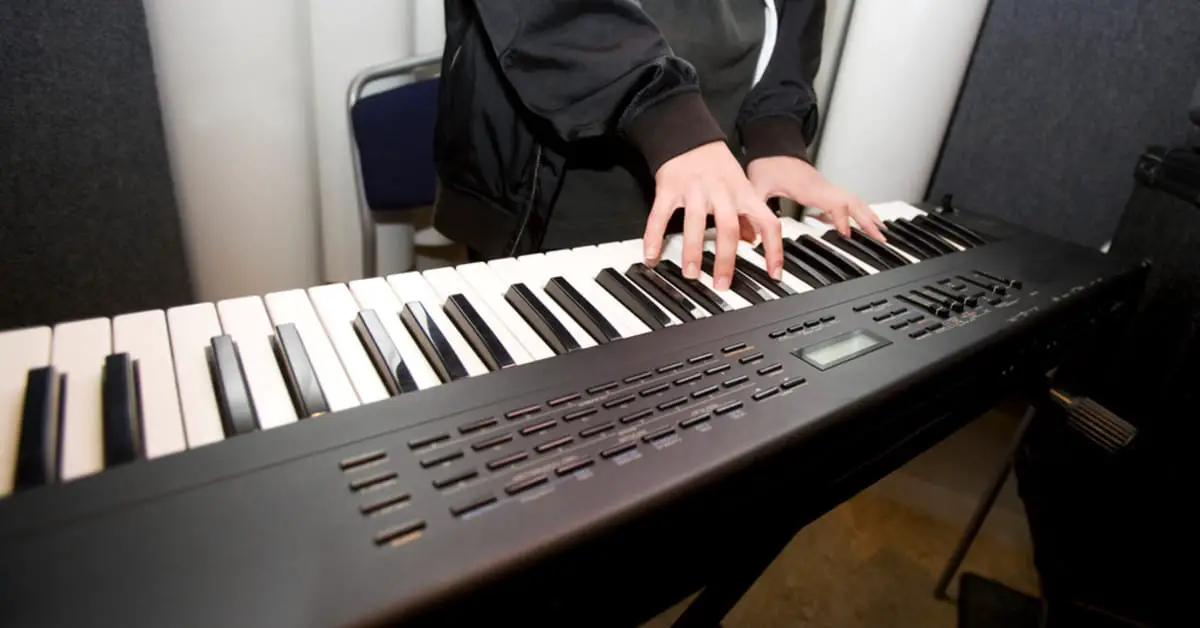In this article, we compare the Kawai K-800 and the Yamaha YUS5. These both give you superior grand piano features in a vertical build. Although they seem to be at par in terms of overall quality, sound control, and craftsmanship, each possesses unique features that you may want to consider when choosing your upright piano. Let us take a closer look at each of these pianos to know which model would be best for you.
Kawai K-800
The K-Series is a professional-grade acoustic upright grand piano line of Kawai. What sets the K-800 apart from most uprights is its size of 53” compared to the usual 48-50”. The size difference is enough to accommodate duplex scaling and an extended key length.
Duplex scaling is the extended piano string beyond the bridge to allow more resonation, producing a thicker, richer, and more vibrant treble. The K-800 also has an Extended Key Length: longer keys add more torque upon playing, resulting in a more powerful sound with lesser effort.
Pros of the Kawai K-800
- Duplex Scaling; a feature exclusive to grand pianos, but the K-800 pioneers in housing it in an upright
- Extended Key Length
- NEOTEX Key Surface
- Millennium III Upright Action
Cons of the Kawai K-800
- Purely acoustic
- Larger and distinctly heavier than most upright pianos
Yamaha YUS5
Most Yamaha uprights are mass-produced at excellent quality, but the YUS5 belongs to the limited edition models since it has more hand-built features. It is encased with a fine-grain soundboard—which is thinner and more solid, resulting in a compact build without compromising the acoustic amplification of the sound. It also makes use of Yamaha’s trademark Ivorite Keys that give a superior look and feel of genuine ivory that seasoned pianists love, giving the player better control and comfort.
But what drives the YUS5 as a frontier is its Silent Piano version: an acoustic-electric hybrid that allows you to plug in headphones for private practice sessions.
Pros of the Yamaha YUS5
- Also available Silent Piano model; an acoustic-electric version with the necessary audio inputs and outputs
- Yamaha-patented Extruded Aluminum Alloy Action Rail
Kawai K800 vs Yamaha YUS5
| Kawai K800 | Yamaha YUS5 | |
| INPUTS | – | • DC In: 16V* • MIDI IN* • AUX Stereo mini-jack* |
| OUTPUTS | – | • MIDI Out* • AUX Out: [L/L+r][R] Standard phone jack* • Headphones: Stereo mini jack (x2)* |
| CONTROLS | • Pedal Type:Damper / Sostenuto / Soft • Mute Lever • *Sostenuto availability depends on the market area • Hammer Type: double felted mahogany | • Pedal Type: Damper / Sostenuto / Soft • Mute Lever • Hammer Type: YUS Series Special |
| CONNECTION TYPE | – | • Power Cable* • AC Adaptor: PA-300C* • USB to Device* • USB to Host* |
| COMPATIBILITY | – | Bluetooth* |
| SIZE | 65 x 153 x 134 cm (DxWxH) | 64 x 153 x 131 cm (DxWxH) |
| WEIGHT | 284kg (626lb) | 257kg (566lb) |
| INCLUDED APPS | – | Smart Pianist* |
| WARRANTY | 10 years | • 5 years for electronic/electromechanical parts* • 10 years for acoustic parts* |
*Features exclusive to the Silent Piano version of the YUS5.
Comparison
Both the Kawai K-800 and Yamaha YUS5 give you the experience of a grand piano without occupying much space. They both have the sostenuto pedal feature that gives you added control over your harmonics. They also have unique takeaways that would greatly benefit you either way, depending on your performance needs.
The Kawai K-800 would be best if you prefer to fill the room with pure, superior acoustic quality without the additional audio equipment. The solid spruce soundboard encasing its duplex scaling innovation delivers uncompromised clarity and power at any given dynamic range.
The Yamaha YUS5, on the other hand, is more compact and has the Silent Piano version that would be best if you need exclusive or private practice sessions due to limited space.


